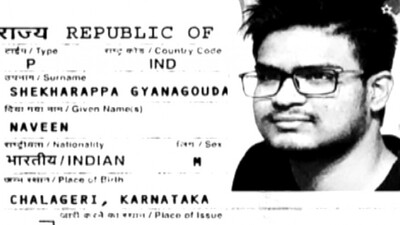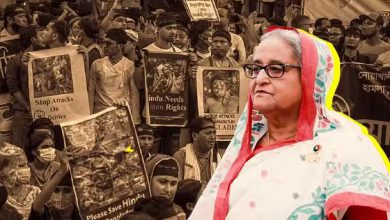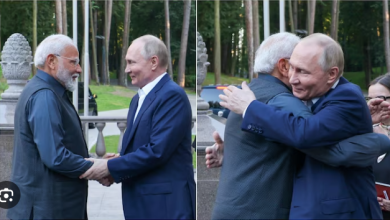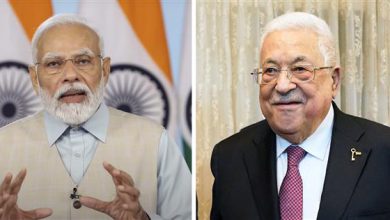Indian Student Killed in Shelling in Ukraine; Was Studying Medicine in Kharkiv

Naveen SG’s death has prompted other students to consider leaving their bunkers to try to get to the border.
Pralay Kumar Nayak and Pratik Dhal, second-year medical students in Kharkiv National Medical University, represent the vagaries of fortune for those caught in the crossfire of the Russia-Ukraine war.
On February 22, Dhal managed to leave Ukraine before flights were stopped. He is now safely home in Delhi. But Nayak has been sheltering underground in a metro station in the northeastern city of Kharkiv, amidst heavy Russian shelling.
On Tuesday, an Indian student in Kharkiv was killed in the bombardment.
Since Dhal got home on February 23, he has frequently been on the phone with his friends 4,000 km away, to get information about their situation and offer solace.
On Monday morning, the Indian embassy in Ukraine issued an advisory asking Indians to “leave Kyiv urgently” by train or any means possible as shelling intensified in the capital.
About 480 km east in Kharkiv, Indian students are holed up in basement bunkers and metro stations. No one knows exactly how many Indians there are in the city: estimates range from 2,000 to 4,000. Most of them study medicine.
“We have been hearing sound of bombings regularly,” said Nayak, who has taken shelter in the Studentska metro station along with friends from university. “The structure vibrates. I can’t sleep peacefully. I am tired now
On February 15, the Indian embassy in Ukraine had advised nationals who did not have essential work in the country to leave temporarily due to “uncertainties” in the situation.ADVERTISEMENT
On February 15, the Indian embassy in Ukraine had advised nationals who did not have essential work in the country to leave temporarily due to “uncertainties” in the situation.
On February 21, the embassy tweeted to say that additional flights were being organised from Ukraine to India “in view of the continued high level of tensions and uncertainties”.
Dhal said that this filled him with panic and he decided to go home. “Air India scaled up its fare to Rs 50,000 for a one-way ticket,” he complained. “Earlier I would get a return ticket in Rs 35,000. I booked Qatar Airlines which was cheaper. It is shocking that airlines would hike rates at such a time.” He reached India on February 23.
Nayak and others at the university were still unsure about whether war was imminent and decided to continue their classes. The Kharkiv university, he said, had not warned foreign students to leave the country and India’s advisory came too late.
The next day, Russia started a full-scale assault on Ukraine. Nayak saw an air strike near his university-allotted
He and some friends moved to the Studentska metro station with some ready-to-eat meals, cash and essentials. Since then, he has stepped out only to buy groceries. Each time he does, he “sees smoke everywhere”.
“When we hear bombardments or missiles zooming past by, we run back to the metro station,” he said.
Nayak said that many Ukranians have taken up arms to defend their country. “Their patriotism is beautiful,” he said. He and his friends were helping by distributing food parcels in the metro station.
But the situation is getting more difficult, said Nayak. Most supermarkets have shut down, he added, and drinking water is out of stock. Students are drinking juices and boiling tap water.
Adding to their woes, ATMs are running dry. Nayak has limited cash, which he is saving so that he can leave the country. The Indian government has asked students to find their own way to the western borders.
With the metros in Kharkiv shut, he would have to travel 14 km by road to reach the railway station. “There is no guarantee of our safety on road,” he noted. A train leaves Kharkiv for Lviv, in the west of Ukraine, three times a day. “Some of my seniors succeeded in boarding one today,” he said.
He said the few students paid Rs 90,000 for taxis to reach the western border. “Now even that is hard to find,” he said.
Kumar said Italy, the United States of America, United Kingdom and Middle Eastern countries had started evacuating their students two weeks before Russia’s invasion.
Indian students in the bunkers were hoping that the violence would subside after Russia and Ukraine began talks on Monday. But the news on Tuesday of the death in shelling of a fourth-year Indian medical student, Naveen SG, has shocked them.
“The shelling is now happening anywhere and everywhere,” said Nayak. “He stepped out to buy grocery and was killed. We are now planning to leave from here by tomorrow, find any transport or lift to save our lives.”
Back in Delhi, Dhal was glued to the news, shocked at how Kharkiv had been transformed over the past six days. He anxious about his friends in Kharkiv.
“I worry about them,” he said. “The Indian government is publicising about bringing back 1,000 Indian students. But all their efforts are focused on the western border of the country. What about thousands of students in eastern parts of Ukraine?”
… thank you for making Scroll.in the digital-only news organisation with the widest reach in India.
We request you to support our award-winning journalism by making a financial contribution towards the Scroll Ground Reporting Fund. The fund will ensure we can continue to ask the questions that need to be asked, investigate what needs to be uncovered, document what must not go unrecorded.






